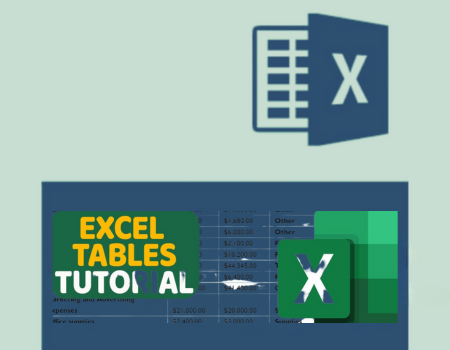Using Tables to Manage EXCEL Databases
Speaker: Cathy Horwitz
Speaker Designation: Microsoft Office Instructor & Consultant, PC Training and Consulting

Speaker: Cathy Horwitz
Speaker Designation: Microsoft Office Instructor & Consultant, PC Training and Consulting

Have you struggled to use PivotTables, and functions like VLOOKUP, SUMIF, etc.? The struggle is for one reason; your data is in the wrong format. I have something to share with you. It’s so powerful that when you know this, your Excel life will become much easier
Join this webinar to learn how to set up data in the perfect format and to learn tools to best utilize that data.
A table is a powerful feature to group your data together in Excel. Think of a table as a specific set of rows and columns in a spreadsheet. You can have multiple tables on the same sheet.
You might think that your data in an Excel spreadsheet is already in a table simply because it's in rows and columns. However, your data isn't in a true "table" unless you've used the specific Excel data table feature.
We will do a deep dive into Excel’s Table feature, which offers numerous opportunities to vastly improve the integrity of your worksheets.
The Table feature simplifies sorting and filtering lists of data, allows easy insertion or deletion of rows and columns of data, eliminates the need to freeze worksheet panes, and provides easy-to-read data formats.
When rows of data are added to a table, PivotTables, Sparklines, Conditional Formatting, and other objects will automatically include the new data. Redefining sets of data becomes obsolete.
In today's data-driven world, the ability to efficiently manage and analyze large datasets is crucial for businesses and professionals alike. Microsoft Excel, a powerful tool in the Microsoft Office suite, remains a popular choice for managing and analyzing data due to its versatility and user-friendly interface. One of the most effective features within Excel for handling large volumes of data is using tables.

Cathy teaches classes on the Microsoft suite of application software including Excel, PowerPoint, Word, Access, and Outlook. Cathy has over 30 years of experience in the classroom and virtual training and has been an instructor of Microsoft Office since 1989.
Cathy Horwitz believes that when your employees know the capabilities of the software they use, they will demonstrate improved productivity, will be more efficient, and will be able to problem-solve more easily. Her strengths include customizing classes based on the needs of individual students and providing realistic business examples to complement the training. She is a high-energy trainer with a flair for training the Experienced student.
She holds the Modern Classroom Certified Trainer certification from Logical Operations which prepares instructors for all aspects of delivering a course using the latest training technologies and approaches.
When not teaching, Cathy enjoys shopping estate sales and refinishing mid-century furniture.